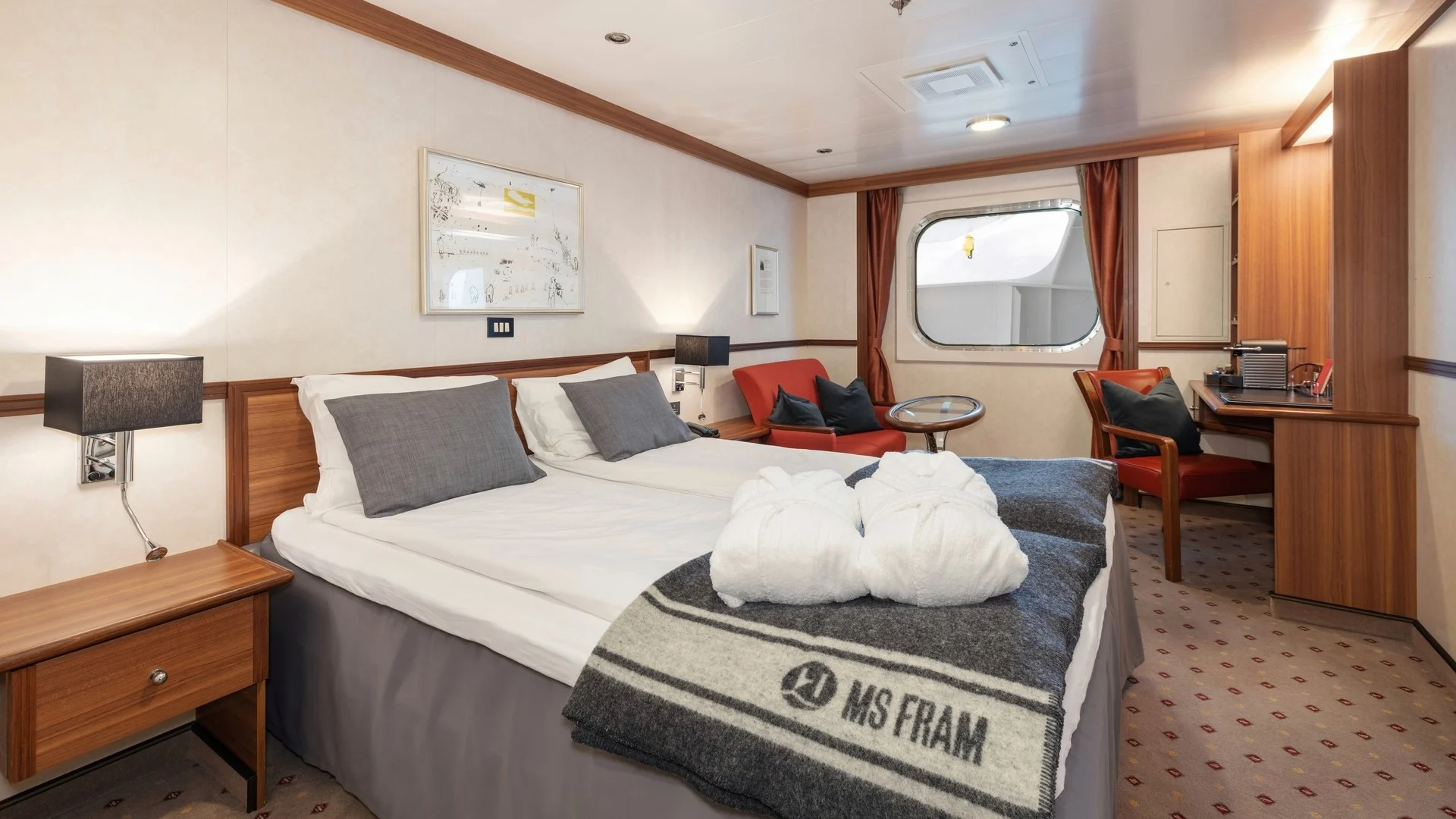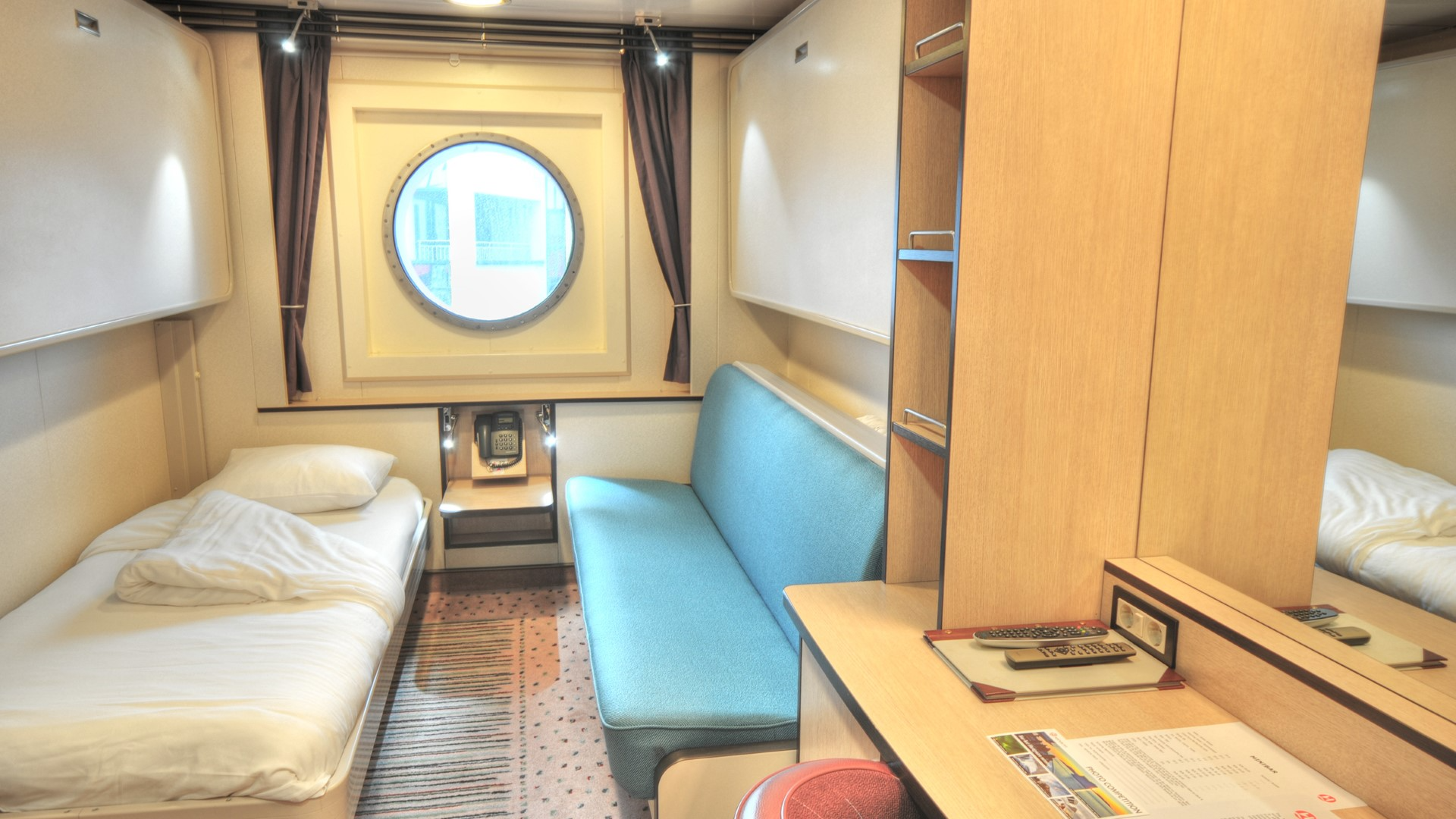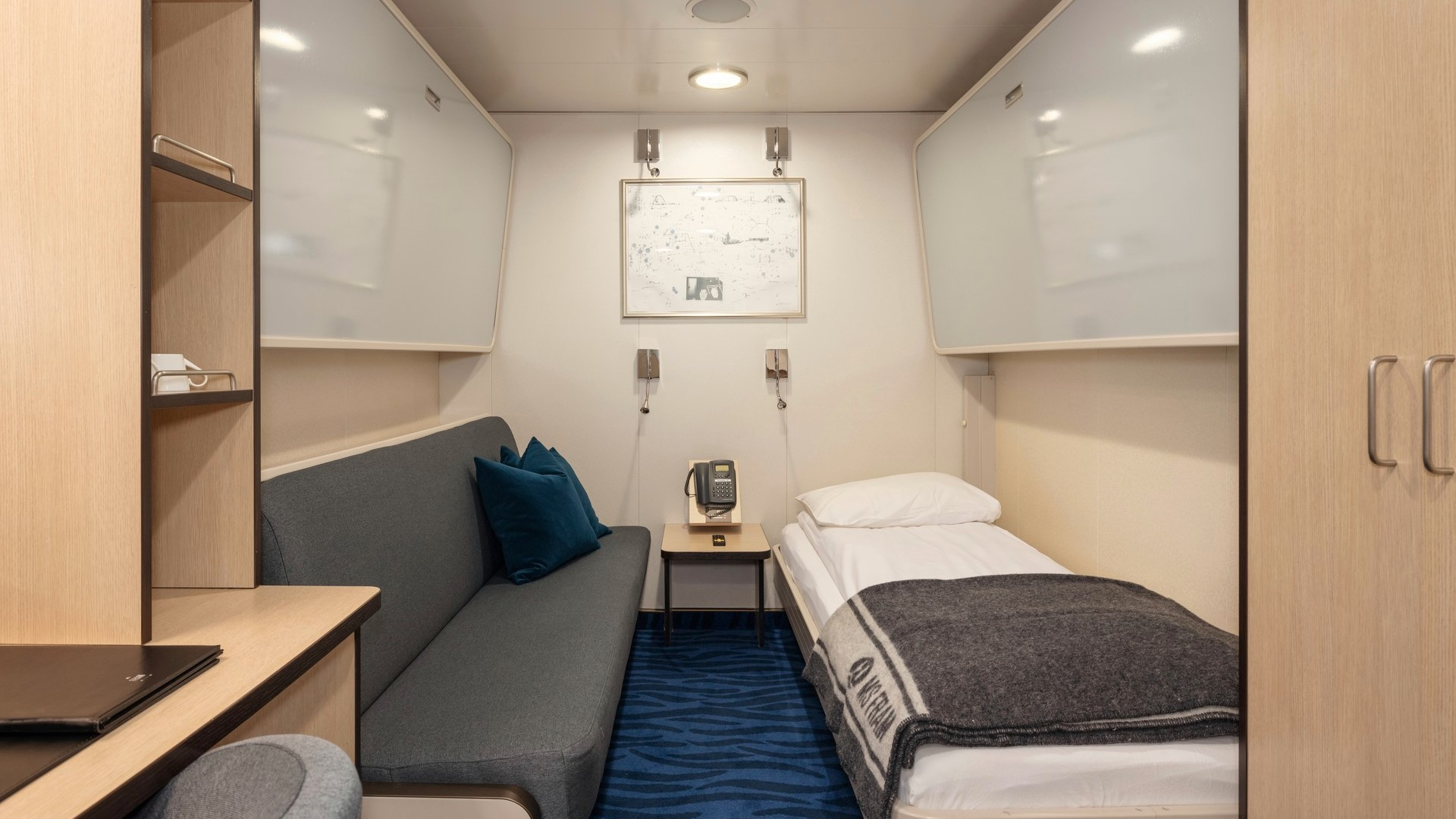Antarctica & Patagonia Expedition (Northbound)
- 15th March 2025
- 22 Nights
- Santiago de Chile
- MS Fram

Inside price from
£11,828*/per person
Balcony price from
Enquire for price
Outside price from
£13,999*/per person
Suite price from
£17,428*/per person
* based on twinshare stateroom
Your itinerary
- Santiago de Chile
- Fly to Puntarenas
- At Sea
- At Sea
- Antarctica
- Antarctica
- Antarctica
- Antarctica
- Antarctica
- Antarctica
- Antarctica
- Antarctica
- At Sea
- At Sea
- Chilean fjords
- Puerto Natales
- Puerto Natales
- Puerto Edén
- At Sea
- Castro
- At Sea
- At Sea
- Valparaiso
Day 1
15th Mar '25
Santiago de Chile
Arrive
0:00
Depart
0:00
Day 2
16th Mar '25
Fly to Puntarenas
Arrive
0:00
Depart
0:00
Day 3
17th Mar '25
At Sea
Arrive
0:00
Depart
0:00
Day 4
18th Mar '25
At Sea
Arrive
0:00
Depart
0:00
Day 5
19th Mar '25
Antarctica
Arrive
0:00
Depart
0:00
Day 6
20th Mar '25
Antarctica
Arrive
0:00
Depart
0:00
Day 7
21st Mar '25
Antarctica
Arrive
0:00
Depart
0:00
Day 8
22nd Mar '25
Antarctica
Arrive
0:00
Depart
0:00
Day 9
23rd Mar '25
Antarctica
Arrive
0:00
Depart
0:00
Day 10
24th Mar '25
Antarctica
Arrive
0:00
Depart
0:00
Day 11
25th Mar '25
Antarctica
Arrive
0:00
Depart
0:00
Day 12
26th Mar '25
Antarctica
Arrive
0:00
Depart
0:00
Day 13
27th Mar '25
At Sea
Arrive
0:00
Depart
0:00
Day 14
28th Mar '25
At Sea
Arrive
0:00
Depart
0:00
Day 15
29th Mar '25
Chilean fjords
Arrive
0:00
Depart
0:00
Day 16
30th Mar '25
Puerto Natales
Arrive
0:00
Depart
0:00
Day 17
31st Mar '25
Puerto Natales
Arrive
0:00
Depart
0:00
Day 18
1st Apr '25
Puerto Edén
Arrive
0:00
Depart
0:00
Day 19
2nd Apr '25
At Sea
Arrive
0:00
Depart
0:00
Day 20
3rd Apr '25
Castro
Arrive
0:00
Depart
0:00
Day 21
4th Apr '25
At Sea
Arrive
0:00
Depart
0:00
Day 22
5th Apr '25
At Sea
Arrive
0:00
Depart
0:00
Day 23
6th Apr '25
Valparaiso
Arrive
0:00
Depart
0:00
Your ship - The MS Fram
MS Fram was purpose-built as an expedition vessel with a superior ice class, chart drawing tools, a ship depth-sounding database, extractable forward sounding sonar, iceberg search lights, an autonomous tracking system, an oversized oil retention system for self-sufficiency, and a full ‘expedition tools deck’ equivalent to a car-deck that holds 25 vehicles. We believe that as an explorer, you need an ‘expedition base camp’ that is comfortable. It should combine ‘all oceans capabilities’ with safety, flexibility, and environmental friendliness. That’s MS Fram. She’s simply the best expedition ship imaginable.
This ship has passed stringent tests and is accredited by Bureau Veritas (BV), the leading independent certification body. BV’s strict and thorough safety audit ensures that every ship complies with industry and international best practices in health, safety and hygiene. Feel confident when you see the SafeGuard label, as this means your vessel met the highest standards to achieve certification. SafeGuard also entails following best practice guidelines with regard to hygiene, sanitation and limiting the spread of infectious diseases on board.
Fram means ‘forward’ — lifting our expectations of the cruise ahead. MS Fram was built in 2007 with one mission in mind: to bring her guests closer to nature, wildlife, and unforgettable experiences. The spacious outside decks include access to the very front of the ship, which is perfect for observing marine wildlife.
MS Fram was purpose-built as an expedition vessel with a superior ice class, chart drawing tools, a ship depth-sounding database, extractable forward sounding sonar, iceberg search lights, an autonomous tracking system, an oversized oil retention system for self-sufficiency, and a full ‘expedition tools deck’ equivalent to a car-deck that holds 25 vehicles. We believe that as an explorer, you need an ‘expedition base camp’ that is comfortable. It should combine ‘all oceans capabilities’ with safety, flexibility, and environmental friendliness. That’s MS Fram. She’s simply the best expedition ship imaginable.
This ship has passed stringent tests and is accredited by Bureau Veritas (BV), the leading independent certification body. BV’s strict and thorough safety audit ensures that every ship complies with industry and international best practices in health, safety and hygiene. Feel confident when you see the SafeGuard label, as this means your vessel met the highest standards to achieve certification. SafeGuard also entails following best practice guidelines with regard to hygiene, sanitation and limiting the spread of infectious diseases on board.
Fram means ‘forward’ — lifting our expectations of the cruise ahead. MS Fram was built in 2007 with one mission in mind: to bring her guests closer to nature, wildlife, and unforgettable experiences. The spacious outside decks include access to the very front of the ship, which is perfect for observing marine wildlife.
The Restaurant
Observation Lounge
Gym
Fitness Room
Jacuzzi
Sauna
MS Fram was purpose-built as an expedition vessel with a superior ice class, chart drawing tools, a ship depth-sounding database, extractable forward sounding sonar, iceberg search lights, an autonomous tracking system, an oversized oil retention system for self-sufficiency, and a full ‘expedition tools deck’ equivalent to a car-deck that holds 25 vehicles. We believe that as an explorer, you need an ‘expedition base camp’ that is comfortable. It should combine ‘all oceans capabilities’ with safety, flexibility, and environmental friendliness. That’s MS Fram. She’s simply the best expedition ship imaginable.
This ship has passed stringent tests and is accredited by Bureau Veritas (BV), the leading independent certification body. BV’s strict and thorough safety audit ensures that every ship complies with industry and international best practices in health, safety and hygiene. Feel confident when you see the SafeGuard label, as this means your vessel met the highest standards to achieve certification. SafeGuard also entails following best practice guidelines with regard to hygiene, sanitation and limiting the spread of infectious diseases on board.
Fram means ‘forward’ — lifting our expectations of the cruise ahead. MS Fram was built in 2007 with one mission in mind: to bring her guests closer to nature, wildlife, and unforgettable experiences. The spacious outside decks include access to the very front of the ship, which is perfect for observing marine wildlife.
The Restaurant
Observation Lounge
Gym
Fitness Room
Jacuzzi
Sauna
Staterooms

suite
Expedition Mini suite

outside
Enjoy these standard outside cabins with separate beds and bunk beds found on middle decks, with sp ... ace for up to four people. 7 – 13 m2 Window Bathroom TV
More
inside
Relax in these comfortable, standard inside cabins on middle or upper deck with separate beds where ... one can be turned into a sofa. 6 – 10 m2 No window Bathroom TV 1 bed/1 couch
More